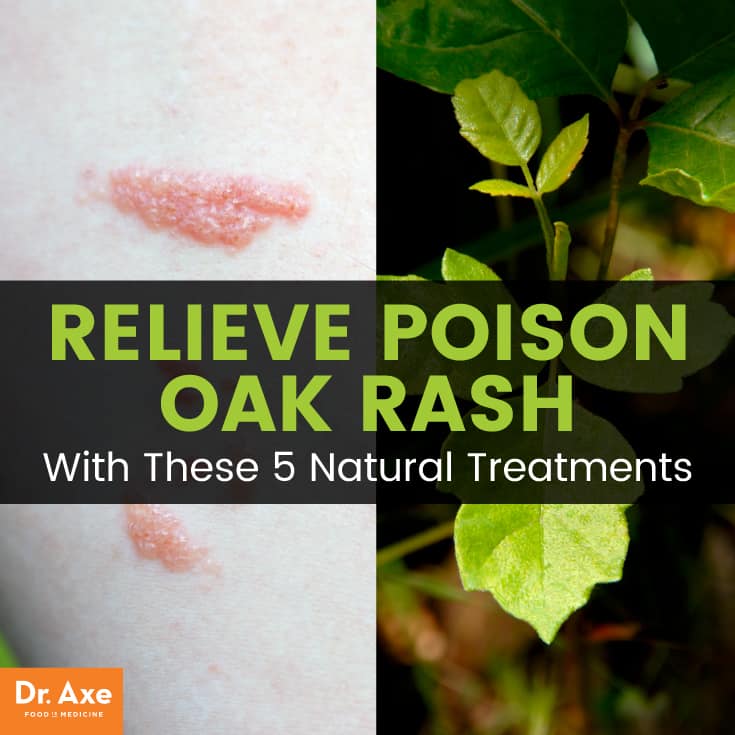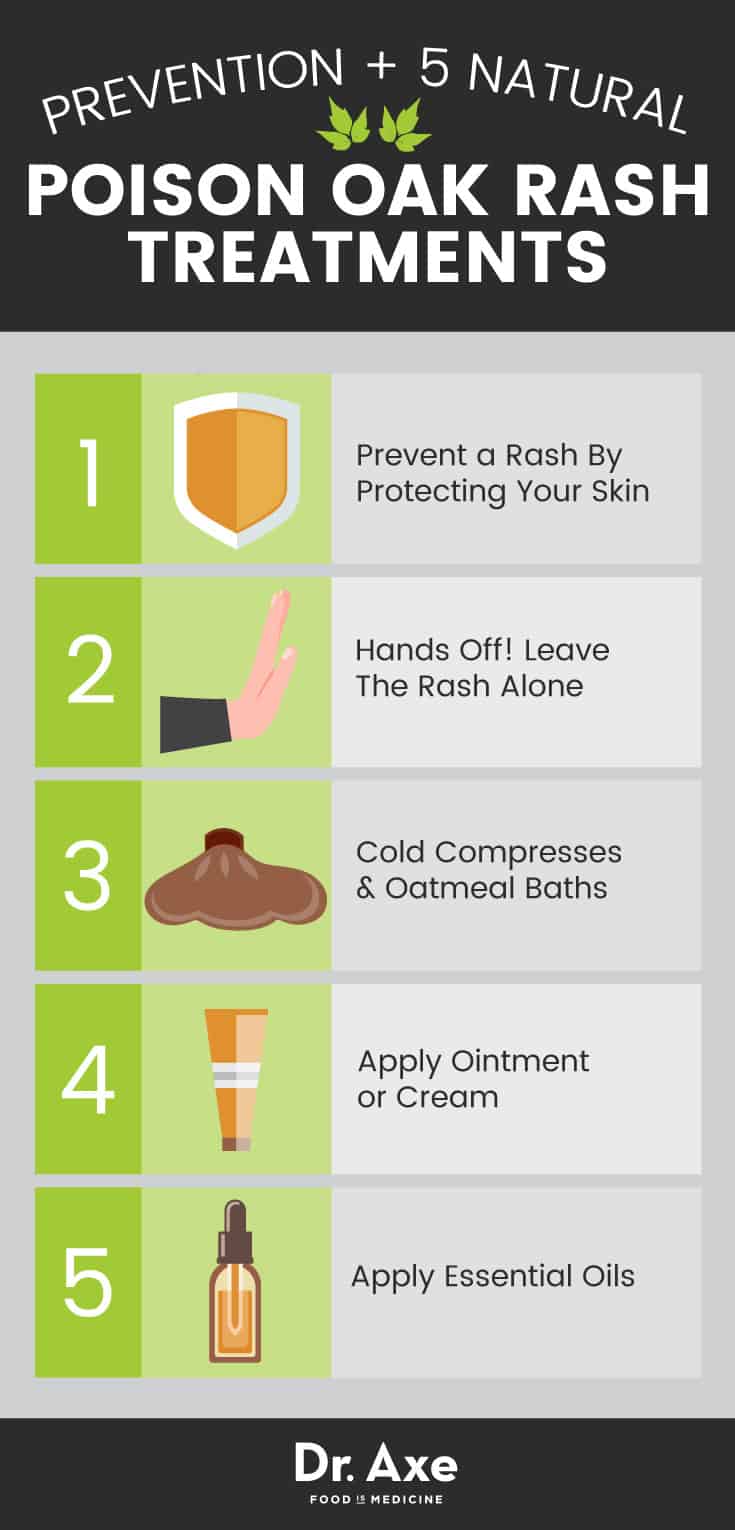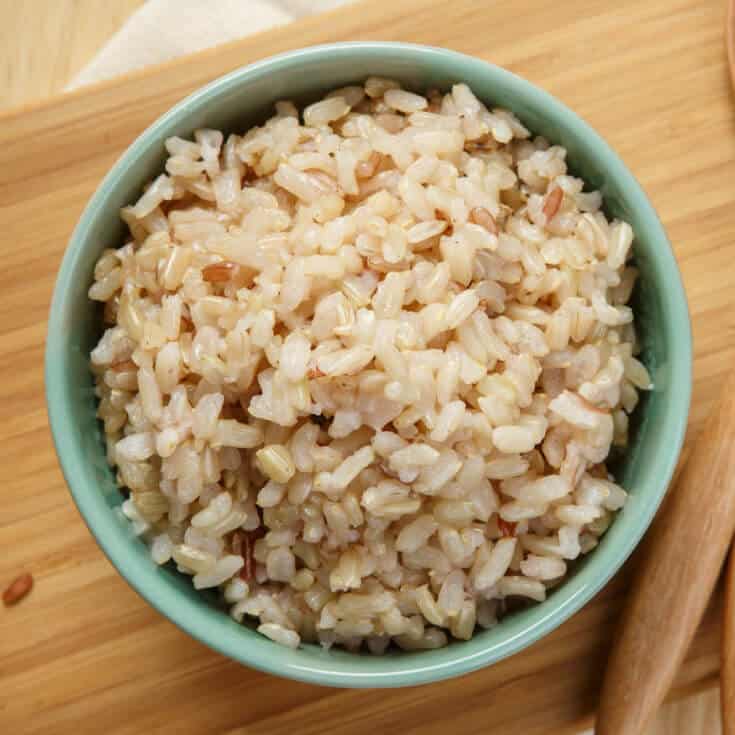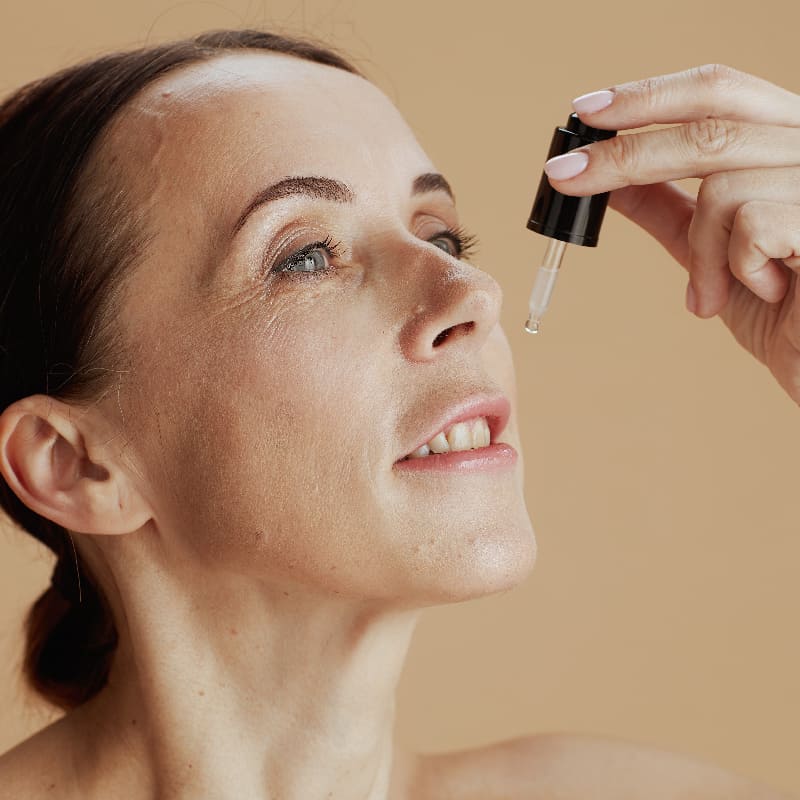This Dr. Axe content is medically reviewed or fact checked to ensure factually accurate information.
With strict editorial sourcing guidelines, we only link to academic research institutions, reputable media sites and, when research is available, medically peer-reviewed studies. Note that the numbers in parentheses (1, 2, etc.) are clickable links to these studies.
The information in our articles is NOT intended to replace a one-on-one relationship with a qualified health care professional and is not intended as medical advice.
This article is based on scientific evidence, written by experts and fact checked by our trained editorial staff. Note that the numbers in parentheses (1, 2, etc.) are clickable links to medically peer-reviewed studies.
Our team includes licensed nutritionists and dietitians, certified health education specialists, as well as certified strength and conditioning specialists, personal trainers and corrective exercise specialists. Our team aims to be not only thorough with its research, but also objective and unbiased.
The information in our articles is NOT intended to replace a one-on-one relationship with a qualified health care professional and is not intended as medical advice.
Find Poison Oak Rash Relief with These 5 Natural Treatments
June 4, 2017

According to the American Academy of Dermatology, “A rash from poison ivy, oak, or sumac usually lasts one to three weeks. Most rashes will go away without treatment.” (1) While your rash may heal on its own, it’s still likely to be itchy and uncomfortable during the process — sometimes even severely, depending on how allergic you are to the plant’s oils. This is where natural treatments for a poison oak rash can really be helpful — such as applying ointment, essential oils or a soothing compress. These remedies can help speed up the skin’s healing process and reduce rash symptoms like redness, swelling and itchiness, in addition to lowering the potential for developing an infection.
What Is Poison Oak?
Poison oak rashes are mild to severe skin rashes that develop when the plant’s oily sap, called urushiol, seeps into the skin’s pores and causes an allergic reaction and immune response.
The most common ways for the skin to be exposed to urushiol include directly rubbing or touching the plant (such as when gardening, hiking or walking outdoors), or through indirect contact when holding, touching or wearing any object or fabric that is carrying the oil. Indirect exposure can take place when petting your dog, using garden tools, when wearing shoes or socks that have recently touched the plant, in addition to other ways. (2) In rare cases urushiol can also be inhaled through the nostrils if the plant is burned. However, this is much less likely to occur than contact through the skin.
There are several types of plants that commonly cause allergic reactions and rashes: (3)
- Western poison oak (Toxicodendron diversiloba)
- Eastern poison oak (Toxicodendron pubescens)
- Eastern poison ivy (Toxicodendron radicans)
- Western poison ivy (Toxicodendron rydbergii)
- Poison sumac (Toxicodendron vernix)
How to Spot a Poison Oak & Poison Ivy Plant:
In many cases you can identify both poison ivy and poison oak (which look similar) by sight because they grow on branches in a specific pattern in groupings of three leaflets (conjoined leaves). Here are some signs to look for when determining if a plant is poison oak or ivy: (4)
- Many types of plants have a group of three leaves at the top of their branches only. But poison oak and poison ivy have groups of three leaves all the way down the branches as well. In other words, one way to distinguish between poison oak/ivy and other non-harmless plants is to check how the leaves grow up the length of the plant’s branches. If single leaves grow all the way up the branch, then the plant is not poison oak or ivy.
- Poison oak and poison ivy, plus some other plants, also grow leaflets. This means the stems of the three leaves join together on one main stem. This creates what appears to be one bigger leaf. Botanically, each of the three smaller leaves is called a “leaflet.” If you look at the middle leaflet on a poison oak or ivy plant, its stem is longer than the stem of the two side leaflets.
- The plant’s leaflets are green. They can be anywhere from dull to very bright. They tend to be “reddish in the spring, green in the summer and yellow, orange or red in the fall.”
- Poison oak and poison ivy grow in an alternate leaf pattern. This means that along the plant’s branches no leaf stem is directly across from another leaf them. Instead the stems alternate (one a bit higher than the next).
- The plants have a thick base, which some say looks a bit like celery.
- Sometimes the plants produces tiny, white flowers that hang in clusters. These may or may not be fragrant, and may also produce light green, white or black pitted little “fruits” that are about the size of a green pea.
- You can check if the plant’s leaflets or branches have any tiny black spots where bruising or insects have caused holes to form and the plant’s resin to harden. When resin leaks it appears clear and/or milky, which then turns black and hardens as it dries.
- Finally, pay attention to how the plant positions itself if it’s “climbing” up a tree, fence, trellis, etc. Poison oak and ivy grow almost straight up. But, they typically don’t wrap themselves around (“twine”) trees or other objects.
Signs & Symptoms of a Poison Oak Rash
Urushiol is found in all parts of the plant, including the leaves, stems and roots. It can even survive for a brief period of time after the plant has died. A rash often does not start developing and itching until about 12 to 72 hours after you come into contact with the oil.
After coming into contact with poison oak, it’s estimated that you have up to ten minutes to remove the allergenic oil before it starts to signal the immune system to fire up and cause a reaction. If you are someone who is very sensitive to these “poisonous” plants, you have even less time to remove the oil from your skin — only around 2–3 minutes. Regardless of how allergic to poison oak or ivy you are, the longer you wait to wash the oil off of your skin or remove any contact with objects that have touched the plant, the more oil will be absorbed into your skin and the worse the rash will likely become.
Once you’ve started to experience an allergic reaction due to urushiol exposure, what does a poison oak rash look like? Not everyone will have a reaction to poison oak, ivy or sumac. In other words, contact with the oil does not guarantee a reaction or rash. But for those who do, symptoms usually include:
- A rash that appears red or like red hives/”streaks,” which can develop anywhere on the body (hands, feet, legs, arms, face or even genitals, for example).
- Itchiness or tingling.
- Heat and swelling around the rash.
- In some cases development of small or large blisters, often forming red streaks or lines.
- Sometimes the skin will ooze and a crust will form. This usually happens around blisters and goes away as they heal.
- For some people with a severe rash that forms blisters, a skin infection can possibly develop. Signs of an infection include developing a fever or having pus, pain, swelling and warmth around the site of the rash.
What does a poison oak rash look like compared to one caused by poison ivy or poison sumac?
Before attempting to treat your rash, it’s important to distinguish between different types of common skin rashes. Skin problems like eczema, allergies or dermatitis can all cause redness and itching. Poison oak, ivy and sumac can all cause similar-looking rashes because they all contain urushiol that causes the allergic reaction. If you visit a doctor, they may be able tell the difference between the three based on how your symptoms look. However, treatments for all these rashes is almost always the same. In most cases the rashes from these plants will be “indistinguishable.” (5)
Poison Oak Rash Causes & Risk Factors
- Poison oak causes an allergic reaction when the plant’s resins, specifically the allergic oil called urushiol, comes into contact with the epidermis layer of the skin. This is the protective barrier that is mainly located on the skin’s surface.
- The epidermis is made up of lipids, sweat, water and sebum (formed from triglycerides and cholesterol). Urushiol can easily penetrate the skin’s barrier. Then it begins to cause changes to deeper layers of the skin, including the area surrounding cells (specifically the intercellular matrix) and the follicles (also called the pores).
- Once urushiol comes into contact with the sebaceous glands, especially if the skin is exposed to heat, follicles expand and cause the oil to spread. Cells called Langerhans cells can alert other cells and the immune system that a foreign substance has entered the skin and may be a threat.
- The immune system gets the signal that unwelcome antigens (from the poisonous plant) are passing through the skin. This triggers an inflammatory response that causes a rash, itching, pain and swelling.
The most common risk factors for developing a poison oak rash include:
Are people living in some areas more susceptible to developing a poison oak rash than others? According to experts, “Poison ivy, poison oak and poison sumac can all be found in most areas of the U.S., except Alaska, Hawaii, and the deserts of the Southwest. In some areas of the country (East, Midwest and South), poison ivy grows as a vine. In the northern and western U.S., and around the Great Lakes, it grows as a shrub. Each poison ivy leaf has three leaflets.”
- Having very sensitive skin. People who commonly develop rashes, have another type of inflammatory skin condition, or who are highly allergic can expect a rash and reaction in less time than those with more resistant skin or who are only mildly allergic.
- Exposure of the resins/oil to a thin part of your skin, such as between your fingers or toes. Thicker skin located on your palms or soles of your feet can sometimes resist or slow down penetration of the allergenic oil. But thinner skin is more permeable and fragile.
- Exposure to a large amount of the oil. The more oil that contacts the skin, the quicker the immune system will be stimulated.
- Not having any barrier between your skin and the plant. Sometimes people purposefully apply a product to their skin before being near these plants (such as a balm). Or they wear gloves to protect themselves. Research shows that these can be very helpful in reducing oil/skin contact and therefore development of rashes.
Conventional Treatments for Poison Oak Rash
First, your doctor will likely review your symptoms to determine if they match what a poison oak rash looks like. It’s possible that another allergy or similar condition is causing your symptoms. So a proper diagnosis is important to know which treatment will work best.
For mild-to-moderate rashes your doctor will likely recommend applying lotion to the affected area to soothe itchiness and dry the skin. Two common lotions are hydrocortisone and calamine lotion. (6) He or she might also suggest taking antihistamine pills to control the allergic reaction and reduce itching.
If a rash becomes very intense or severe — causing lots of itching, swelling and signs of inflammation — the most common treatment will be corticosteroids. These are usually applied topically in a lotion but sometimes given as an injection. Corticosteroids are prescribed medications used to reduce inflammation and therefore to help soothe the itch and other side effects of an immune response. This approach may or may not work to reduce the rash pretty quickly. It depends on how allergic you are. In the case of an infection (this is not common but can affect people with severe allergies), your doctor may prescribe antibiotics.

Prevention + 5 Natural Poison Oak Rash Treatments
1. Prevent a Rash By Protecting Your Skin
If you’re outside and at risk for exposing your skin to any of these poisonous plants, you can take precautions to prevent a reaction by covering your skin well. You can use several types of widely available creams, soaps and lotions to help lower your risk for developing symptoms. They work by forming a protective barrier or by removing the oil if you do come into contact with the plant. One product called Ivy Block, a topical lotion sold at most pharmacies or drugstores that contains the ingredient called bentoquatam, may block absorption of urushiol oil. None of these products guarantee that you will be fully protected, however, especially if you’re very allergic to urushiol.
In addition to applying a barrier to your skin, it’s always a good idea to also use protective gloves before working outside with your hands. Or, cover other parts of your skin if hiking, camping, walking on trails outdoors, etc. Wearing something like gardening gloves can be helpful in most cases. But remember that oil can linger on unwashed gloves or other equipment for weeks! Always wash them thoroughly afterward (ideally right away) with soap and water (or bleach). Regular hand soap, laundry detergent and body wash/soap work well enough for most people. There are also special products now available. If you’re very sensitive to these plants, keep in mind there’s still a risk that some oil will make its way onto your skin through the gloves.
If you suspect that urushiol has made its way onto your skin or clothes, wash your skin immediately along with anything you were wearing or using. You can take immediate steps to lower the odds of a rash spreading by showering in warm water and washing the clothes you were wearing. You can also apply a product called Technu to the skin that works to remove the oil. But, it’s best when used right away (within one to three hours or less of contact).
2. Hands Off! Leave The Rash Alone
If a rash begins to form, or you notice symptoms like tingling, redness and itching, resist the temptation to pick or scratch. This can make the rash even worse and cause scratches or open cuts, which may become infected. Leave the rash alone as much as possible while it heals. Only gently touch the affected area to cleanse it with lukewarm water and mild soap, or when applying ointment or a compress. Do not open up blisters or remove their crusty coating, since this actually helps with the healing process.
3. Cold Compresses & Oatmeal Baths
According to research published in the Western Journal of Medicine, to help reduce swelling and heat, you can try soaking in a lukewarm bath with oatmeal or Epsom salt. (7) Another option is applying a damp towel to your skin. Or you can even use a damp, cold pillowcase that has soaked in some in cold water. (8) Another option is to gently wrap the damp towel around ice. Then gently press it against inflamed skin for 15–20 minutes at a time. You can apply a compress up to several times a day if needed, ideally about every three to four hours. Taking a cold shower may also help.
4. Apply Ointment or Cream
After gently washing the affected skin, apply calamine lotion or hydrocortisone cream/lotion to reduce itchiness and oozing. Read directions for dosage instructions based on the strength of the product. You can apply most of these creams in liberal amounts about 2–4 times daily. And, they are safe in most cases for children too.
5. Apply Essential Oils
Topically applying certain essential oils for allergies may improve healing by lowering inflammation of the skin and preventing an infection from forming. In addition, once the rash begins to crust and heal, moisturizing products like aloe vera, Shea better and coconut oil can further help soothe itchiness. Essential oils to try applying to the rash include: (9)
- tea tree
- chamomile
- geranium
- rose
- helichrysum
- and lavender
To treat the rash, add three drops of your chosen oil (or a combination) to a compress. Apply to the area up to three times daily. It’s best to start with only one application daily in order to test your reaction. If you have sensitive skin, you can mix three drops with a half teaspoon of coconut oil to further dilute it and reduce its strength. You can also make a homemade anti-itch cream using several ingredients like witch hazel, calendula, apple cider vinegar, coconut oil and bentonite clay to dry the skin and facilitate with healing. Bentonite clay is used in many natural creams works to dry up blisters, reduce swelling and possibly help to prevent infections. The other ingredients help protect the skin’s natural moisture barrier and reduce growth of bacteria. Apply a small amount of the anti-itch treatment to your skin until it dries and forms flakes. Then gently rinse with water.
Precautions When Treating Poison Oak Rash
Although a poison oak, ivy or sumac rash will likely go away on its own within several weeks (or even less), sometimes a severe rash can cause complications. Visit your doctor, or even the emergency room, right away if you notice the following symptoms, which can be a sign of a severe allergic reaction or infection that’s spreading:
- Very swollen eyes or patches on your face.
- Swollen mouth, tongue or difficulty swallowing.
- Trouble breathing normally.
- Your rash has spread to the point of covering most of your body.
- Very swollen, oozing blisters.
- The rash has spread to your genitals and is causing pain.
- Much of your skin itches, or nothing seems to ease the itch.
Final Thoughts on Poison Oak Rash Symptoms, Causes & Treatments
- Poison oak is a type of “poisonous plant.” It causes an allergic reaction and immune response due to containing the irritating oil called urushiol.
- Symptoms include redness, itching, blisters, redness, tingling and swelling.
- Doctors usually treat poison oak, ivy or sumac skin rashes with antihistamines, topical lotions and sometimes corticosteroids. Natural treatments for poison oak rash include applying anti-itch ointment or lotion, essential oils or a soothing compress.










